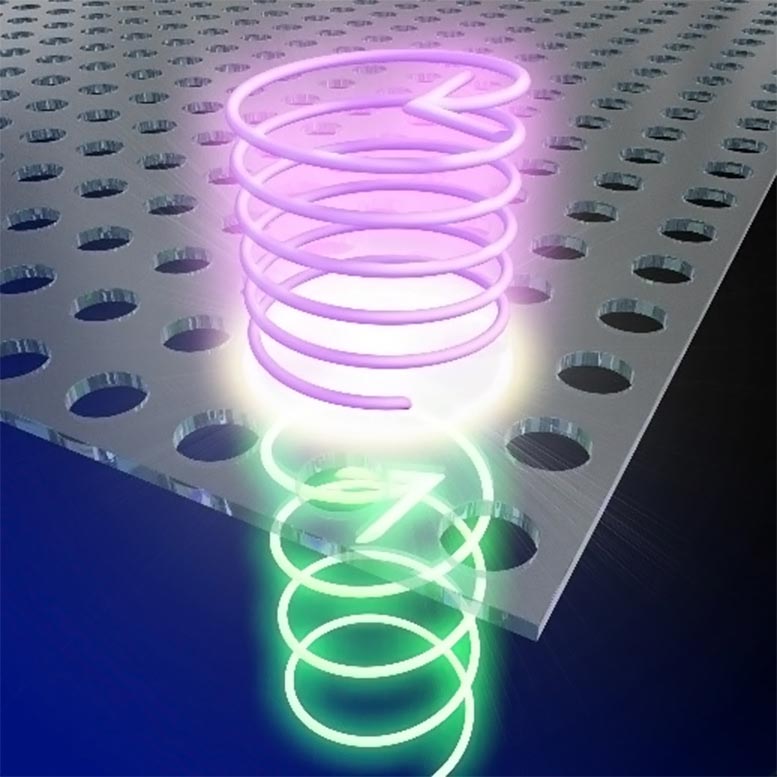Spectroscopy is the use of light to analyze physical objects and biological samples. Different kinds of light can provide different kinds of information. Vacuum ultraviolet light is useful as it can aid people in a broad range of research fields, but generation of that light has been difficult and expensive. Researchers created a new device to efficiently generate this special kind of light using an ultrathin film with nanoscale perforations.
The wavelengths of light you see with your eyes constitute a mere fraction of the possible wavelengths of light that exist. There’s infrared light which you can feel in the form of heat, or see if you happen to be a snake, that has a longer wavelength than visible light. At the opposite end is ultraviolet (UV) light which you can use to produce vitamin D in your skin, or see if you happen to be a bee. These and other forms of light have many uses in science.
Within the UV range is a subset of wavelengths known as vacuum ultraviolet light (VUV), so called because they are easily absorbed by air but can pass through a vacuum. Some VUV wavelengths in the region of around 120–200 nanometers (nm) are of particular use to scientists and medical researchers as they can be used for chemical and physical analyses of different materials and even biological samples.
